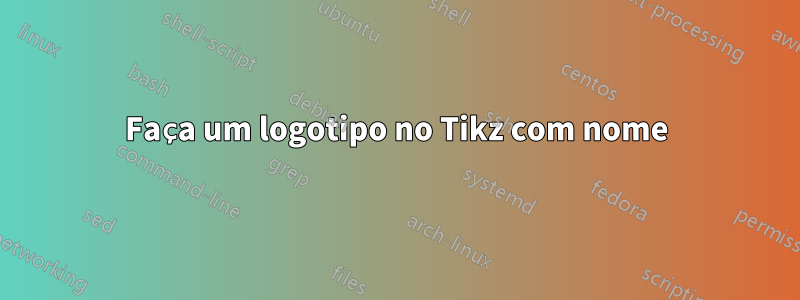
Estou tentando fazer um pequeno logotipo com látex. Eu desenho a imagem (uma árvore de decisão) e gostaria de adicionar um texto ao lado dela. Além disso, preciso que o desenho seja pequeno, no tamanho do texto ao lado.
Apenas uma imagem aleatória para mostrar que tipo de formato eu gostaria de ter:
Até agora fiz o desenho onde tentei adicionar algum texto ao lado. Nenhum resultado, infelizmente.
\documentclass{scrartcl}
\usepackage[a4paper,margin=1cm,landscape]{geometry}
\usepackage{tikz}
%%%<
\usepackage{verbatim}
\usepackage[active,tightpage]{preview}
\PreviewEnvironment{tikzpicture}
\setlength\PreviewBorder{5pt}%
%%%>
\usetikzlibrary{positioning,shadows,arrows}
\begin{document}
\begin{figure}
\begin{minipage}[c]{7cm}
\begin{tikzpicture}[
state/.style={circle, draw=none, fill=orange, circular drop shadow,
text centered, anchor=north, text=white},
leaf/.style={circle, draw=none, fill=red, circular drop shadow,
text centered, anchor=north, text=white},
level distance=0.5cm, growth parent anchor=south
]
\node (State00) [state] {$X$}
child{ [sibling distance=3cm]
node (State01) [state] {$f(x)_{1}$}
child{
child{ [sibling distance=2cm]
node (State02) [state] {$f(x)_{11}$}
child{
child{
node (State03) [leaf] {$\hat{y}_{1}$}
}
}
child{
child{ [sibling distance=2.0cm]
node (State04) [state] {$\hat{y}_{2}$}
}
}
}
}
child{ [sibling distance=2cm]
child{
node (State10) [state] {$f(x)_{12}$}
child{
child{
node (State11) [leaf] {$\hat{y}_{3}$}
}
}
child{
child{
node (State12) [state] {$\hat{y}_{4}$}
}
}
}
}
}
;
\end{tikzpicture}]
\end{minipage}%
\begin{minipage}[c]{\textwidth-7cm}
Some text describing the image.
Some text describing the image.
Some text describing the image.
\end{minipage}
\end{figure}
\end{document}
E o texto deverá ter este formato:
\documentclass{article}
\pagestyle{empty}
\usepackage{xcolor}
\usepackage{bm}
\usepackage{setspace}
\begin{document}
\setstretch{0.5}
\begin{center}
Nam$\textcolor{orange}{\bm{{\hat{e}}}}$ of New \\
~\\
Team
\end{center}
Você poderia me indicar a solução?
EDITAR
Com a ajuda do @Guilherme Zanotelli, fiz funcionar e coloquei as proporções adequadas. Mas o logotipo fica muito pequeno quando salvo em pdf.
Como posso aumentá-lo mantendo a proporção inalterada?
resolvido com fonte maior
Responder1
Não entendo qual é realmente a questão, mas suponho que uma das questões seja fazer com que Nam*ê* of New Teamapareça no lado direito da árvore de decisão.
Abaixo está uma maneira de fazer isso dentro do tikzpicture (sem necessidade de minipáginas).
\documentclass{article}
\usepackage[a4paper,margin=1cm,landscape]{geometry}
\usepackage{tikz,pbox}
\usepackage{xcolor}
\usepackage{bm}
\usepackage{setspace}
%%%<
\usepackage{verbatim}
\usepackage[active,tightpage,floats]{preview}
\PreviewEnvironment{tikzpicture}
\setlength\PreviewBorder{5pt}%
%%%>
\usetikzlibrary{positioning,shadows,arrows}
\begin{document}
\begin{figure}[h]
\begin{tikzpicture}[
state/.style={circle, draw=none, fill=orange, circular drop shadow,
text centered, anchor=north, text=white},
leaf/.style={circle, draw=none, fill=red, circular drop shadow,
text centered, anchor=north, text=white},
level distance=0.5cm, growth parent anchor=south
]
\node (State00) [state] {$X$}
child{ [sibling distance=3cm]
node (State01) [state] {$f(x)_{1}$}
child{
child{ [sibling distance=2cm]
node (State02) [state] {$f(x)_{11}$}
child{
child{
node (State03) [leaf] {$\hat{y}_{1}$}
}
}
child{
child{ [sibling distance=2.0cm]
node (State04) [state] {$\hat{y}_{2}$}
}
}
}
}
child{ [sibling distance=2cm]
child{
node (State10) [state] {$f(x)_{12}$}
child{
child{
node (State11) [leaf] {$\hat{y}_{3}$}
}
}
child{
child{
node (State12) [state] {$\hat{y}_{4}$}
}
}
}
}
};
\node[right] at (current bounding box.east) {\pbox{\textwidth}{\relax\ifvmode\centering\fi Nam$\textcolor{orange}{\bm{{\hat{e}}}}$ of New \\
~\\
Team}};
\end{tikzpicture}
\end{figure}
\end{document}
Responder2
Esta é uma adaptação deA resposta de Guilherme Zanotelli, usando Forest, do qual sou bastante fonte. Ele também usa standaloneo que é menos complicado, na minha opinião, do que preview(mas usa preview, dependendo da configuração).
Em um logotipo, uma decisão importante será a escolha da fonte. Embora eu não tenha certeza do que recomendaria, pois depende muito do contexto e do público, é improvável que o Computer Modern seja uma boa escolha. Apenas como ilustração, utilizo kpfontsno exemplo abaixo.
Também fiz questão de demonstrar como selecionar um tamanho de fonte arbitrário para o texto à direita. O primeiro número é o tamanho do ponto. O segundo é o salto da linha de base. Fontes escaláveis são cruciais. Por padrão, você provavelmente está obtendo bitmap Computer Modern. Tudo muito bem à sua maneira, mas absolutamente inadequado aqui. (Se você quiser CM, use \usepackage[T1]{fontenc}sozinho para garantir versões escalonáveis.)
Aumentei a largura das linhas na árvore porque você não quer que as linhas desapareçam se o logotipo for usado em tamanho pequeno. Pelo menos, presumo que não.
\documentclass[border=10pt,multi,tikz,border=5pt]{standalone}
\usepackage{forest,bm}
\usetikzlibrary{shadows}
\usepackage[T1]{fontenc}
\usepackage{kpfonts}
\begin{document}
\begin{forest}
state/.style={fill=orange},
leaf/.style={fill=red},
for tree={
text centered,
child anchor=parent,
text=white,
circle,
circular drop shadow,
math content,
state,
font=\large,
edge={line width=1pt},
},
for descendants={
edge path'={(.child anchor) -- +(0,7.5mm) -- (!u.parent anchor)},
l sep'=15mm,
},
l sep'=7.5mm,
where n children=0{
!u.s sep'=15mm,
}{},
[X
[f(x)_{1}
[f(x)_{11}
[\hat{y}_{1}, leaf]
[\hat{y}_{2}]
]
[f(x)_{12}
[\hat{y}_{3}, leaf]
[\hat{y}_{4}]
]
]
]
\node [right, align=center, font=\fontsize{50pt}{75pt}\selectfont] at (current bounding box.east) {Nam$\textcolor{orange}{\bm{{\hat{e}}}}$ of New\\Team};
\end{forest}
\end{document}






